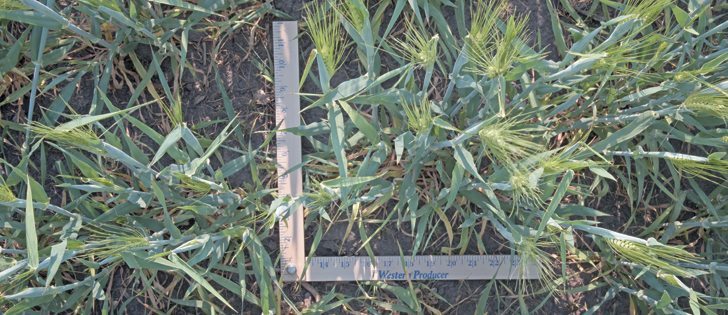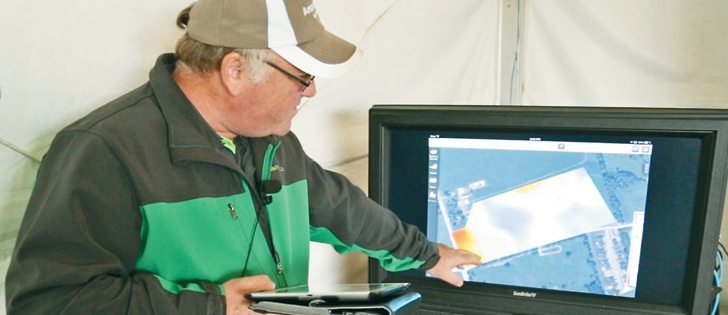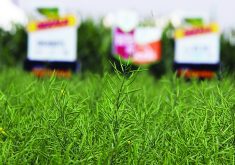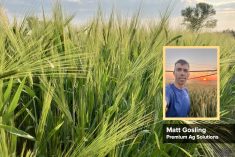High variability from field to field and region to region makes it tough to properly gauge the 2015 western Canadian crop
Market research experts at CWB will be dusting off their boots and sharpening their pencils next week in an effort to estimate the size and quality of this year’s grain and oilseed harvest.
CWB’s second annual western Canadian crop tour begins July 21 with groups departing from Winnipeg, Saskatoon and Calgary.
Each group will follow a pre-determined route through some of Western Canada’s most productive crop regions.
After three days of touring, the groups will converge in Regina July 24 to compare notes, crunch numbers and provide the industry with an estimate of how much grain western Canadian farmers are likely to produce this year.
The CWB estimate is a key piece of market information used by farmers, grain handling companies and buyers of Canadian grain.
The numbers established by the tour help grain industry players devise marketing plans, sales programs and grain procurement strategies.
Neil Townsend, a senior member of CWB’s Market Research Services division, said estimating the size of the western Canadian crop can be a challenge at the best of times.
However, the task becomes even more difficult in a year when crop establishment is highly variable from region to region and even from field to field.
“This year should be interesting because last year obviously we were looking at a healthier, better crop generally,” Townsend said.
Read Also

Critical growing season is ahead for soybeans
What the weather turns out to be in the United States is going to have a significant impact on Canadian producers’ prices
“This year, there’s going to be patches where there’s going to be a lot less to look at in the fields.”
CWB’s market research experts have been doing a lot of work to prepare for the event.
Officials have been touring Western Canada over the past two weeks to get a preliminary look at crop conditions in Manitoba, Saskatchewan and Alberta.
Townsend said a significant area of the western Prairies has been adversely affected by a “lack of meaningful rainfall.”
In the worst hit areas, crops are thin and stressed by drought.
Crop staging is uneven, and yield potential has been irreparably damaged.
Some cereal crops are a foot high and heading out.
“There are lot of more garden-like spots,” Townsend added.
“Generally speaking, Manitoba is doing quite good.… East of Saskatoon and north of Saskatoon is doing good and there are other spots as well, but overall, this is kind of a down year for Western Canada, and I think we’ve kind of reached the point where even with beneficial weather going forward, we’re going to have a smallish crop overall in Canada.”
Townsend said the canola crop will “almost definitely” be below the 10-year average.
Spring wheat and durum production will likely follow suit.
CWB is encouraging producers to attend the Canadian Crop Tour Seminar in Regina July 24. It is open to the public and admission is free. Seating is limited.
The seminar will present the company’s production estimates and feature marketing expert Dan Basse from AgResource Co., who will provide a 2015-16 global grains and oilseeds outlook.
Basse’s presentation will look at some of the factors that are likely to influence North American grain markets in the coming months.
Townsend said marketing this year’s crop is likely to present unique challenges.
There should be ample capacity to move the smaller crop to market, but competition for top quality grain and oilseeds among Canadian grain handlers could be significant, he said.
“This is the first time that we’ve had kind of this lighter smaller crop under deregulation for wheat … and on the canola side, it’s also the first time that we’ve had a very small crop when we’ve had all of our anticipated crush capacity in Western Canada completed and ready to go, ”he said.
“Competition for wheat for export could be pretty fierce.”
In a normal year, much of the top quality milling wheat produced in Western Canada moves west to the port of Vancouver en route to export markets in Asia.
This year, the wheat harvest in much of western Saskatchewan and Alberta will be patchy, and overall volumes will be down.
It will be interesting to see if the volume of Manitoba grain shipped through Vancouver increases significantly this year.


















